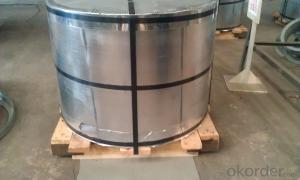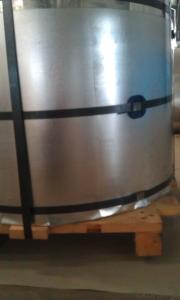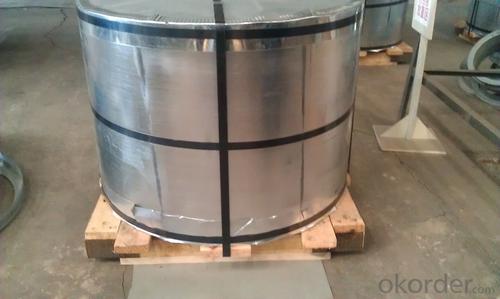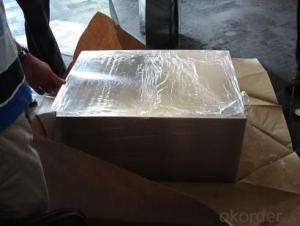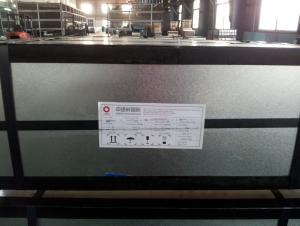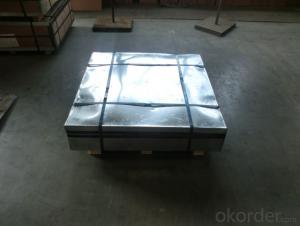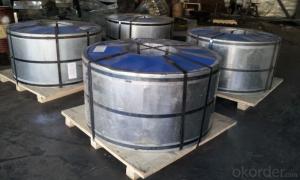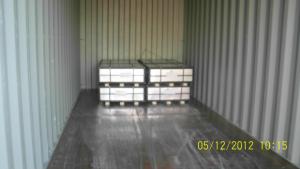Quality of Tin Free Steesl TFS
- Loading Port:
- China Main Port
- Payment Terms:
- TT OR LC
- Min Order Qty:
- -
- Supply Capability:
- -
OKorder Service Pledge
OKorder Financial Service
You Might Also Like
Tin Free Steel (TFS)
Is also known as chromed steel, as it is obtained by coating the metal base (low-carbon steel) with an ultra-thin layer of metallic chrome and then with a chromium oxide layer.This steel product was developed to meet economic requirements, and excels tinplate in paintability, paint adhesion, and economy. It is widely used for making beverage cans and 18-liter cans. It is also used for making photographic film cases and as a protective material for optical fiber cables.
Our TFS Specification:
Standard: AISI, ASTM, BS, DIN, GB, JIS
Material: MR,SPCC
Thickness:0.15mm - 0.45mm
Width: 600mm -1150mm
Temper: T1-T5
Annealing: BA & CA
Coil Inner Diameter: 508mm
Weight: 6-10 tons/coil 1~1.7 tons/sheets bundle
Oil: DOS
Surface: Finish,bright,stone,matte,silver
Packing:
1、For sheets: plastic or waterproof paper, metallic cover and angles, steel strips,wooden pallet.
2、For Coils: plastic or waterproof paper,plastic protect plate,steel strips.
Both Prime and Second Quality Are Available!!!
- Q: How does tinplate handle exposure to pressure and impact?
- Tinplate is known for its excellent strength and durability, making it capable of handling exposure to both pressure and impact effectively. It can withstand moderate levels of pressure without deformation or damage, and its rigid structure helps to absorb and distribute impact forces, minimizing the risk of denting or cracking. Overall, tinplate's resilience and robustness make it a reliable choice for applications where exposure to pressure and impact is expected.
- Q: How is tinplate used in the construction industry?
- Tinplate is commonly used in the construction industry for various applications. It is often utilized for roofing materials, such as tinplate shingles or metal roof panels, due to its durability, weather resistance, and corrosion protection. Additionally, tinplate is used for cladding or siding purposes, providing an aesthetically pleasing and long-lasting exterior finish for buildings. Its versatility also extends to ductwork, where tinplate is used to fabricate air conditioning and ventilation systems. Overall, tinplate's strength, flexibility, and protective properties make it a valuable material in the construction sector.
- Q: Can tinplate packaging be used for sports equipment?
- Yes, tinplate packaging can be used for sports equipment. Tinplate packaging provides durability, protection, and resistance to corrosion, making it suitable to store and transport various types of sports equipment such as balls, racquets, and small accessories. Additionally, tinplate packaging can be customized and branded, enhancing the overall aesthetic appeal of the products.
- Q: Can tinplate be used for promotional and gift items?
- Yes, tinplate can be used for promotional and gift items. Tinplate is a versatile material that can be easily molded into various shapes and sizes, making it suitable for creating unique and customized promotional and gift items. Additionally, tinplate offers excellent printing capabilities, allowing for vibrant and eye-catching designs, making it an ideal choice for branding purposes.
- Q: Cookies with tinplate packaging has what advantage?
- Good mechanical properties: tinplate cans relative to other containers, such as plastic, glass, paper containers and strength, and good rigidity, it is not easy to break. It is not only used for small sale packing, but also the main container for large transportation package.
- Q: How does tinplate contribute to the overall convenience of packaging?
- Tinplate contributes to the overall convenience of packaging due to its durability, versatility, and ability to preserve the quality and freshness of products. It provides a protective barrier against moisture, light, and oxygen, which helps extend the shelf life of food and beverages. Additionally, tinplate is lightweight, stackable, and easy to handle, making it suitable for transportation and storage. Its smooth surface allows for easy printing, enabling clear labeling and branding. Overall, tinplate packaging enhances convenience by ensuring the integrity and convenience of various products.
- Q: Can tinplate be embossed?
- Yes, tinplate can be embossed.
- Q: What is the difference between food grade tinplate and ordinary chemical tinplate? What is the difference between MR material and SPCC?
- The chemical composition of MR material is more strict than that of SPCC material, and the impurities are fewCanned fish must be made of good quality MR material, which reduces the risk of canning
- Q: How does tinplate contribute to the overall stackability of packaging?
- Tinplate contributes to the overall stackability of packaging due to its high strength and rigidity. It provides stability to the packaging structure, preventing it from collapsing or deforming when stacked. Additionally, tinplate's smooth and flat surface allows for better alignment and interlocking of packages, ensuring a stable and secure stack.
- Q: What are the advantages of using tinplate for medical packaging?
- There are several advantages of using tinplate for medical packaging. Firstly, tinplate is highly resistant to corrosion, ensuring the integrity and sterility of medical products. It provides a protective barrier against moisture, oxygen, and light, preserving the efficacy and shelf life of medications and medical devices. Additionally, tinplate is durable and can withstand rough handling during transportation without compromising the contents. Its versatility allows for various shapes and sizes of packaging, making it suitable for a wide range of medical products. Lastly, tinplate is recyclable, making it an environmentally friendly choice for sustainable packaging solutions.
Send your message to us
Quality of Tin Free Steesl TFS
- Loading Port:
- China Main Port
- Payment Terms:
- TT OR LC
- Min Order Qty:
- -
- Supply Capability:
- -
OKorder Service Pledge
OKorder Financial Service
Similar products
Hot products
Hot Searches
Related keywords
